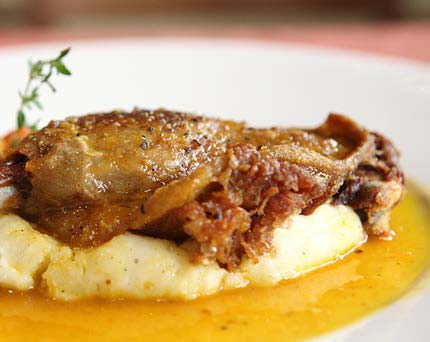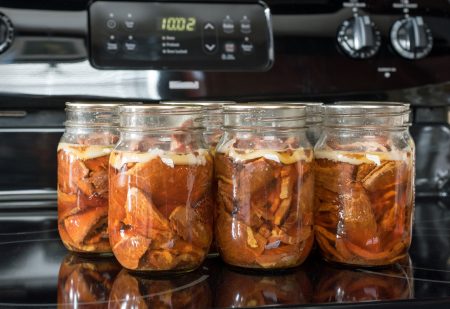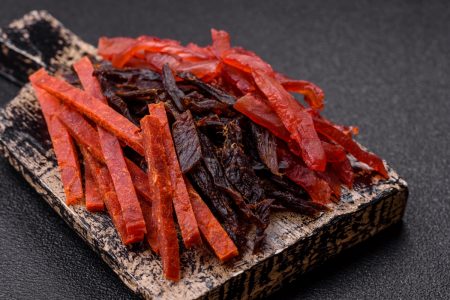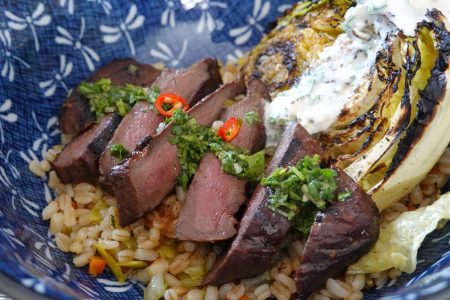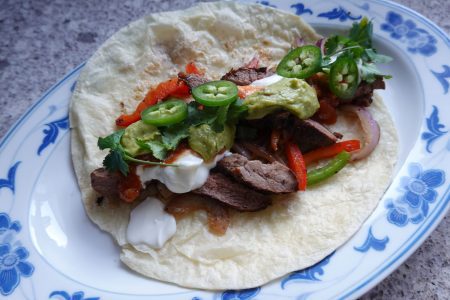Stop! Don’t toss those shanks in the grind pile––make Osso Buco instead.
The way I approach game butchery is with this question: ‘How do I get the most value from this animal?’ Don’t get me wrong. I love back straps, but the slow-roasted dishes are pure luxury. Given a choice, I would choose this recipe for Osso Buco every time. We all use ground venison, but once you eat a well-prepared Osso Buco, you will want to make sure going forward that every shank is carefully cut in two- inch crosscuts and prepared this way. This has become my favorite venison meal.
Osso Buco means “marrow bone” in Italian, or “bone with a hole.” The dish originated in northern Italy as a winter meal of cross-cut veal shanks. The shanks were roasted slowly after a thorough caramelization in a hot oven or a frypan. Italians start the sauce by sautéing carrot, onion, and celery, and serve this meal on top of saffron-colored risotto, mashed potatoes, or buttery egg noodles.
Venison Osso Buco is the kind of thing that you make for yourself, for your closest family members, or the guys that risk their lives for you––your hunting buddies. Serve this on whipped truffle oil potatoes. (I cook yellow or red potatoes with the skins on, then drain and beat them with whipping cream, a bit of butter, concentrated chick- en stock, and truffle oil.)
The rich mahogany color of this dish and the deep round venison flavor is worth the trip. I remember a meal from my wide-eyed childhood. A great uncle who worked in the beef business took us to a top-end steakhouse in Toronto. Being a kid with aspirations of becoming a chef, I wanted to see what steak he was going to order. He ordered short ribs. They came braised in red wine and vegetables. He said it was the tastiest part of the beef. He gave me a rib––pretty much like this Osso Buco.
Here’s how to make your own Osso Buco. Crosscut two-inch shanks from the lower foreleg and hindleg with a butcher’s handsaw. Start by turning the oven on to 375˚F and then seasoning freshly-cut shanks with coarse salt and black pepper. Before you put them in the roaster, toss the shanks in flour. Once they’re in the pan, drizzle them with olive oil––the good stuff that costs $20 a bottle. When the kitchen fills with the smell of roast- ing meat, turn each piece with steel tongs and roast for another 20 minutes or so. You’ll want the shanks to be deep mahogany brown.
The French love their vegetables cut precisely, but the Italians do this less so. I use a sharp French knife to make near-perfect cubes because it makes me happy.
You choose. But cut the vegetables a little bigger than the size of corn kernels: peeled celery root, celery leaves, carrots, and onion, then add smashed garlic and finely diced shallots.
Heat a Dutch oven over medium heat and sauté the vegetables in olive oil until they start to color. Add toma- to paste and stir to the bottom. When the paste turns more brown than red, add two cups of red wine.
Remove the well-browned shanks from the oven and add them to the Dutch oven. Swirl one cup of red wine to loosen and dissolve any roasted bits of brown remain- ing in the pan. Add the liquid to the shanks; they should be nearly covered in liquid. Reduce the oven to 325°F and slide the covered Dutch oven full of shanks into the oven. Check them every half hour. Add beef stock when required. Meanwhile, make a batch of saffron risotto or creamy mashed potatoes.
When the shanks are fork-tender, check the flavor.
Add salt to correct. Put the saffron risotto or whipped potatoes on your guest’s plate, and add a shank or two and a spoon of mahogany sauce with vegetables.
Equipment
- 6-liter Dutch oven
- 12-inch skillet
- Oven
- Wooden spoon
- Roasting pan
- Cutting board
- Chef’s knife
- Vegetable peeler
Ingredients
- 5 pounds venison shanks (deer, elk, moose, or bear)
- 2 cups all-purpose flour
- 2 cups carrots, peeled and diced medium
- 2 cups onions, peeled and diced medium
- 2 cups celery root, peeled and diced medium
- 1 cup celery leaves chopped finely
- 2 cups beef stock
- 4 cloves of garlic smashed
- 2 finely diced shallots
- 4 tablespoons tomato paste
- 3 cups or a regular bottle of red wine
- 1/2 cup olive oil
- coarse salt
- coarse pepper
Method
- Preheat oven to 375˚F.
- Rinse shanks under cold running Drain and dry with paper towels.
- Season shanks well with salt and
- Dredge shanks in flour to coat all
- Place shanks in a roasting pan with a bit of space between each piece.
- Drizzle with olive
- Roast until well Turn once at about 30 minutes.
- Meanwhile, heat the skillet over medium heat and sauté the vegetables in olive until they start to color brown and the onions become transparent.
- Add the tomato paste and stir down to the bottom of the Stir continually until the tomato paste is more brown than red.
- Add one cup of wine and one cup of Stir well and bring back to a boil before shutting off the heat.
- When the shanks are mahogany brown, remove them from the oven and place them in the Dutch
- Pour the vegetables and wine mixture over the shanks, and swirl 1 cup of wine in the roasting pan to loosen and dissolve the roasty bits from the Add this to the shanks.
- Cover the shanks and slide them into the oven, re- ducing the heat to 325˚F.
- Give the shanks at least two hours and possibly three, checking every 30 minutes or so to make sure there is enough sauce to cover the
- Add wine and beef stock as The dredging flour and tomato paste will thicken into a lovely deep-colored sauce.
- Make risotto or mashed
Making Osso Buco is a big effort with a worthy final step in the payoff for hunting. This meal now has a regular spot on the menu. I find that dinner guests who are not familiar with venison are very happy to give this a taste and then return for more. They will enjoy a second serving, but you have earned it.
Per our affiliate disclosure, we may earn revenue from the products available on this page. To learn more about how we test gear, click here.






